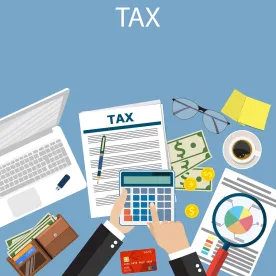Effective May 28, 2020, the Internal Revenue Service (IRS) issued final Treasury Regulations addressing donor disclosure requirements on Form 990, Schedule B. There are three essential takeaways for tax-exempt organizations:
-
In general, Section 501(c)(4) social welfare organizations, Section 506(c)(6) business leagues and other exempt entities that are not Section 501(c)(3)s or 527 political organizations no longer have to include donor identifying information on Form 990, Schedule B.
-
Even tax-exempt entities that are not required to submit a Form 990, Schedule B to the IRS with donor identifying information should closely monitor state law requirements to determine whether donor disclosure rules differ in the specific states where they operate and should also keep in mind that donor information may need to be retained, even if it is not reported on an annual Form 990.
-
The limited group of exempt entities that filed a Form 990, Schedule B without required donor identifying information between July 31, 2019, and Sept. 6, 2019, have not been granted relief.
In the aftermath of a back-and-forth morass of federal guidance and a court battle forcing its withdrawal, tax-exempt entities finally have additional certainty from the U.S. Department of the Treasury (Treasury) and the IRS regarding federal donor disclosure requirements. In general, tax-exempt organizations that are not Section 501(c)(3)s or 527 political organizations do not have to disclose the names and addresses of their donors on their annual Form 990, Schedule B filings that are submitted to the IRS. This group that does not need to disclose donor identifying information includes Section 501(c)(4) social welfare/advocacy organizations, 501(c)(6) business leagues and many other types of exempt entities. These entities continue to have an obligation to file annual Form 990 information returns, they simply leave off the names and addresses of donors on IRS filings.
Unfortunately, the final Treasury Regulations do not plug a small guidance gap created in 2019. On July 16, 2018, the IRS released Revenue Procedure 2018-38, which generally permitted tax-exempt organizations that were not 501(c)(3)s or 527s to leave donor identifying information off of Form 990. On July 30, 2019, a federal judge overturned this IRS guidance on the grounds that the IRS could not waive the donor disclosure requirements, which were previously established by Treasury Regulations, without providing a sufficient opportunity for public notice and comment in accordance with the Administrative Procedure Act.
In September 2019, the IRS issued Proposed Treasury Regulations that were generally consistent with the previously issued Revenue Procedure. However, the Proposed Treasury Regulations left a gap period – July 31, 2019, through Sept. 6, 2020 – during which donors did have to be disclosed. Although taxpayers are entitled to apply the final Treasury Regulations to tax returns filed after Sept. 6, 2019, there is no specific relief for organizations that filed returns without donor information during the short gap period. Those tax-exempt organizations that filed during that gap period and elected not to disclose donors are conceivably at risk of IRS enforcement because they filed an incomplete return. The jury is still out on whether the IRS will make enforcement in that area a priority in light of the multiple reversals of the rules.
Tax-exempt organizations should remain aware that the donor identifying information in Schedule B was not part of the version of the Form 990 available to the general public either before or after any of the IRS guidance in this area during 2018, 2019 and 2020. Although all tax-exempt organizations have long been required to make their tax returns available for public inspection and such returns are typically available on aggregator websites, such as the IRS’ Tax Exempt Organization Search tool or GuideStar, organizations generally have been permitted to exclude donor names and addresses on Schedule B. In other words, a completed Schedule B, when required, was submitted to the federal government but was generally not available to the public. Certain organizations, including Section 527 political organizations and Section 501(c)(3) private foundations (i.e., not Section 501(c)(3) public charities), were and are generally required to provide a complete Schedule B information to the public without redaction.
Certain state governments may take action to require tax-exempt organizations to prepare and release donor information. The preamble to the final Treasury Regulations indicated that to the extent that any state determines that the burdens of collecting and maintaining donor information are justified by its own needs, such state is free to require reporting of this information to the state.
Several states have taken the IRS up on its invitation. Illustratively, New Jersey and New York have taken steps to require certain organizations registered as charities to prepare and submit complete Schedule B filings, although the documents would not be released to the general public. Given that various states extend so-called charitable registration to entities that are not Section 501(c)(3) charities, organizations that are not charities at the federal level could still be required to prepare a completed Schedule B and submit it to state regulators, depending precise registration and disclosure requirements in the states where the entities operate. This is a potential trap for the unwary that may require tax-exempt organizations with multistate operations to prepare multiple drafts of their Form 990 – one for the IRS and another for state and local regulators (where applicable).




 />i
/>i
